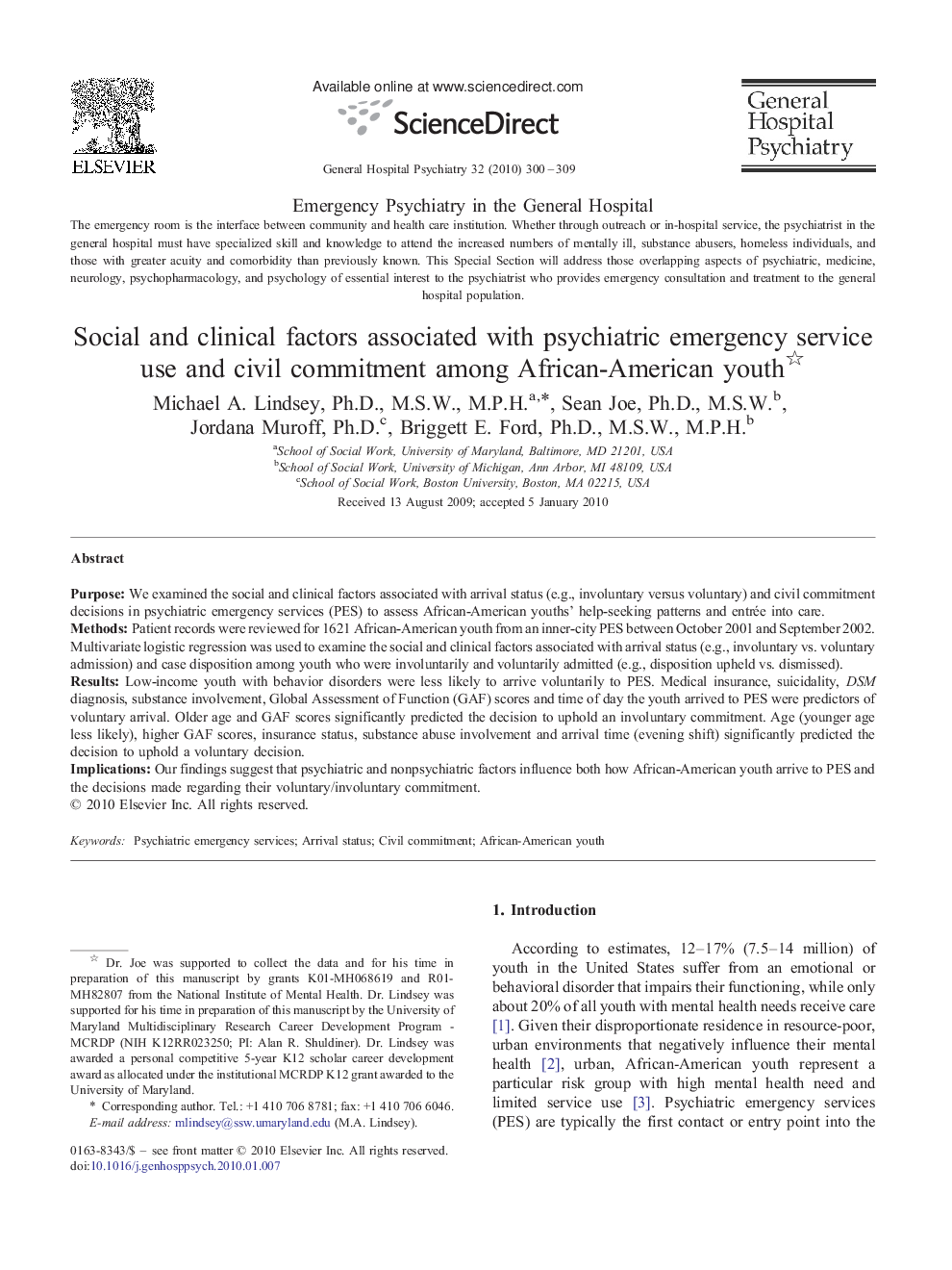| Article ID | Journal | Published Year | Pages | File Type |
|---|---|---|---|---|
| 3238342 | General Hospital Psychiatry | 2010 | 10 Pages |
PurposeWe examined the social and clinical factors associated with arrival status (e.g., involuntary versus voluntary) and civil commitment decisions in psychiatric emergency services (PES) to assess African-American youths' help-seeking patterns and entrée into care.MethodsPatient records were reviewed for 1621 African-American youth from an inner-city PES between October 2001 and September 2002. Multivariate logistic regression was used to examine the social and clinical factors associated with arrival status (e.g., involuntary vs. voluntary admission) and case disposition among youth who were involuntarily and voluntarily admitted (e.g., disposition upheld vs. dismissed).ResultsLow-income youth with behavior disorders were less likely to arrive voluntarily to PES. Medical insurance, suicidality, DSM diagnosis, substance involvement, Global Assessment of Function (GAF) scores and time of day the youth arrived to PES were predictors of voluntary arrival. Older age and GAF scores significantly predicted the decision to uphold an involuntary commitment. Age (younger age less likely), higher GAF scores, insurance status, substance abuse involvement and arrival time (evening shift) significantly predicted the decision to uphold a voluntary decision.ImplicationsOur findings suggest that psychiatric and nonpsychiatric factors influence both how African-American youth arrive to PES and the decisions made regarding their voluntary/involuntary commitment.
